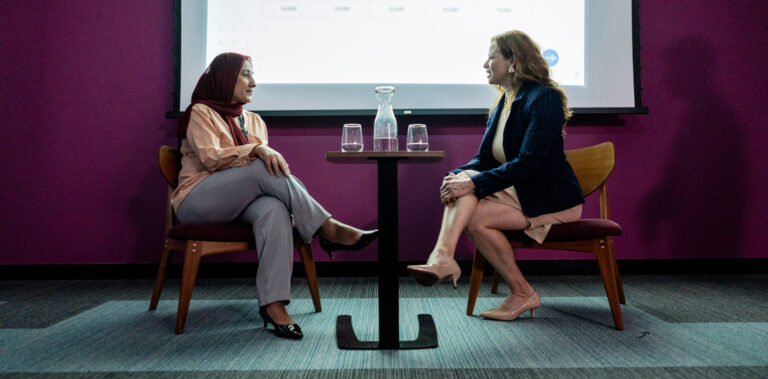The changing face of media

How is the way media organizations’ work changing, and why does it matter?
Last week we hosted a fantastic session exploring the changing face of media with an expert panel to discuss how changes in the newsroom affect the way we, as individuals and businesses, interact with the news.
On the panel, hosted by Bladonmore’s Director, Lina Saigol, were:
- Paul Murphy, Head of Investigations at the Financial Times,
- Chloe Evemy, Media Relations Manager at UBS, and
- Paul Davies, Global Banking Columnist at Bloomberg
Below we’ve highlighted five key talking points, and relevant takeaways, from the seminar.
Explanation is gaining in popularity
Alongside short-form articles, longer explainer pieces are becoming increasingly important. These articles dive deeper into more complex subjects providing more context and exploring the importance of certain concepts or trends. These articles allow their short-form counterparts to speak to a more informed audience, reducing word count but still providing the depth when and where it is needed.
This need for explanation extends to businesses and their spokespeople as well. Spokespeople are often engaged as subject matter experts, so their ability to succinctly and accurately explain the concepts they’re discussing is a highly valued skill. This means preparing your people to explain the concepts they’re discussing, and helping them make things simple, should be equally valued.
In the clickbait era, quality and evidence still matter
The importance of clicks, and therefore clickbait titles, was discussed at length. The temptation, of course, is to chase clicks and to use them to prove the value of what has been written. Obviously, there are other metrics by which you can measure value – many of which are far more important. That’s why the quality of content matters more than ever. Your title might draw someone in, eliciting a click, but unless what you’ve written underneath is of value then that doesn’t matter.
For businesses, this is also true. Your headline-grabbing message might be interesting to the newsroom, but you have to have enough to say to help them populate their article with good quotes, putting some meat on the title’s bones, and not just helping with a catchy headline.
On a similar but slightly adjacent note, evidence is needed now more than ever. The importance of evidence is tied to a lack of perceived trust in anything and everything that people read online. Without something to point to that helps reinforce what you’re saying, people can easily switch off or disregard what you’ve said – especially if it runs contrary to what they’d like to believe.
AI is finding its place in the newsroom
It’s 2024, so of course we have to talk about AI. In the world of news, AI is being used effectively to gather and share news from multiple outlets in one place. The response from traditional news media so far has been more regularly produced and carefully curated newsletters, that give your audience the feeling of greater personalization.
Fortunately for some, AI is not yet capable of developing the same insights and nuance from a story as a writer or columnist in any given sector. If this stays the same, then we could see longer-term changes to the way news is sold and delivered. We may see news outlets selling their stories through AI-focused tech companies that personalise the output based on the readers’ interests.
For business, this means that you’ll still need to be managing and maintaining relationships with people in the media and effort put into those relationships now will still not be wasted in the future.
People still want to connect with people
Historically, the media has been a relationships business. Journalists have worked with and talked to people they know. Whilst individuals might get a kick-start from the brand equity of the publication they work for, they’ll only maintain these connections through building good relationships with the people in their industries. This remains as true today as it has ever been and is being reinforced by a trend for a return to in-person meetings. This trend might be surprising to some, but maintaining relationships works much better face-to-face. There are tangible benefits to grabbing a coffee or having lunch, even in our increasingly digital working world.
Social media doesn’t just speed up the spread of a story, it can breathe new life into an older one
Newsrooms use social media for story origination but they’re not just looking at what a business or an individual posted today. An older story might still be picked up and gain traction. It might be perceived differently in the context of a later day or just have been missed at the time of posting. Pair this with the understanding that when it comes to social media, stories can spread at lightning speed, and something posted a month ago could suddenly become very important overnight. This means building your corporate, or personal, brand needs to be about consistently telling the right stories over time, even if they’re not picked up right away.
It also has implications for measuring your social media successes. Given that today’s forgotten post might be tomorrow’s news, one-off early measurements don’t show the full value of your work. Instead, you should review your posting successes as a whole over a longer period.
If you’re looking for help in telling your story – online, in the media or in-person – get in touch.
Share article


